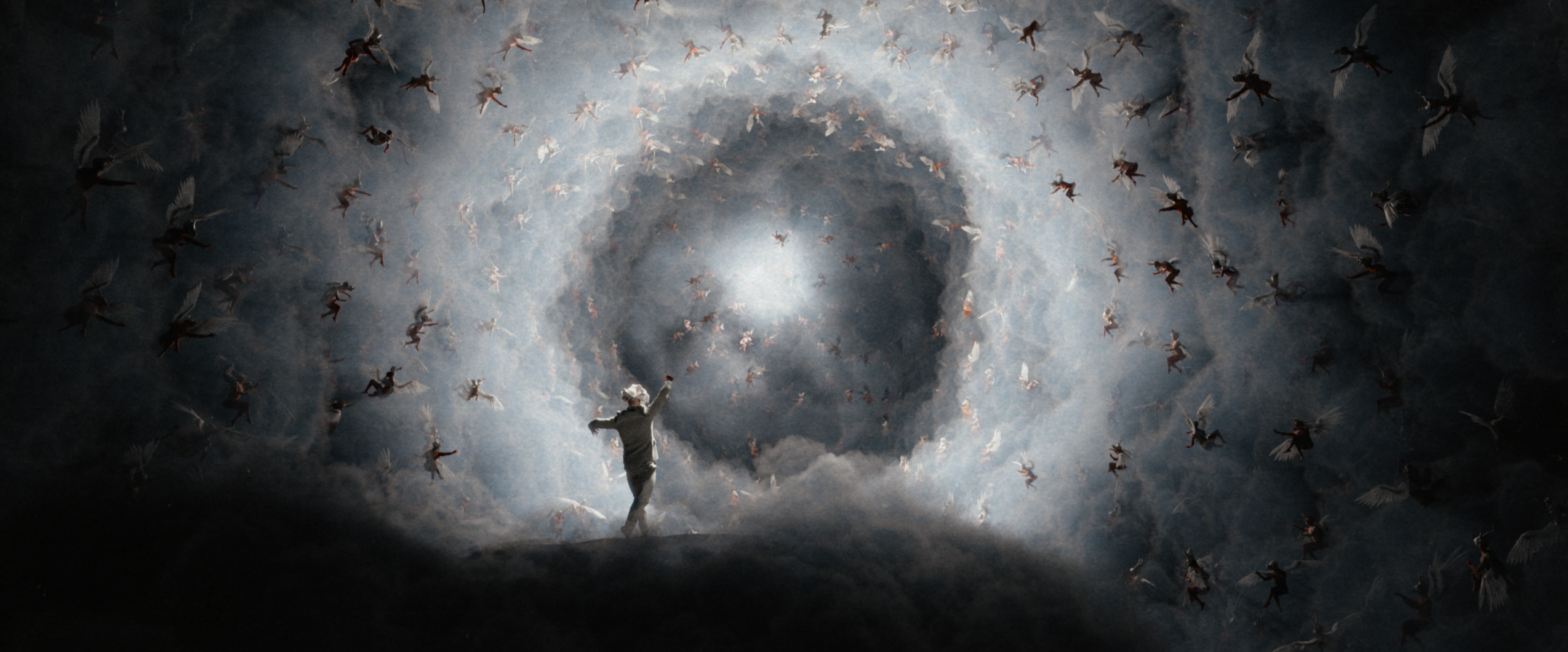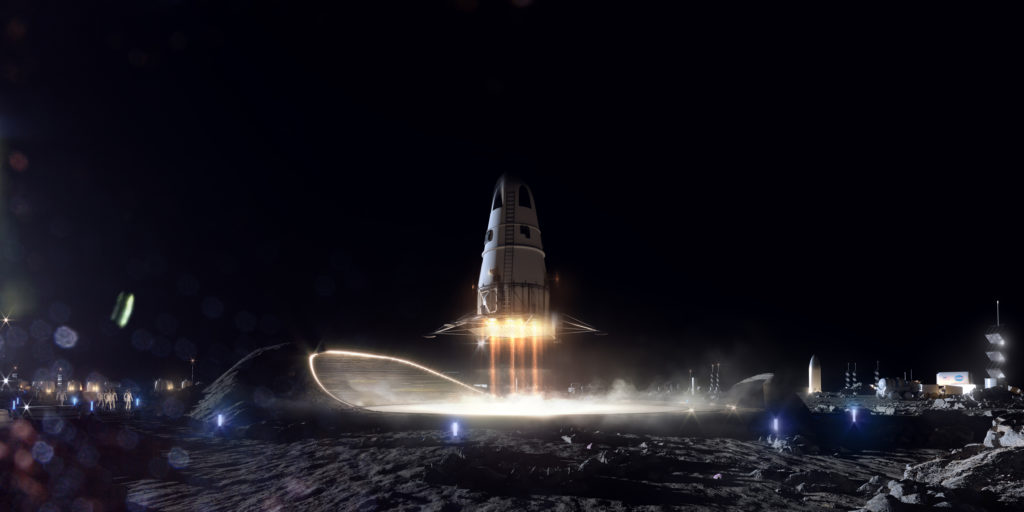
Slashcube on the unique challenges they faced visualizing a lunar settlement for deep space explorers.
By Helena Swahn
Architect, visual artist, and entrepreneur, Thomas Vournazos is passionate about architectural visualization. Since founding his Zurich-based studio Slashcube in 2013, Vournazos and his team have quickly gone from helping local firms visualize their projects to working with clients globally.
Recently, Slashcube used Cinema 4D, Photoshop, Quixel Megascans, and Corona Render to create a cinematic simulation of a Moon Village, a scientific and commercial settlement that could one day allow humans to survive, and even thrive, on the Moon.
Developed by Skidmore, Owings & Merrill (SOM) in partnership with the European Space Agency (ESA) and the Massachusetts Institute of Technology (MIT) the Moon Village design envisions a site near the Moon’s South Pole. Slashcube’s job was to bring the concept to life in ways that showed how humans might live and work on the Moon.
Visualizing Life Beyond Earth
The Moon Village project came to Slashcube via a recommendation from SOM. Project details were minimal at first, and Vournazos recalls talking about how scale and complexity, even landscaping and the amount and types of vegetation, play a big role in workflow and cost breakdown.
That’s when the SOM team turned to them and said: “Well, you don’t have to worry about that, as there are no trees on the Moon.” Vournazos’ team’s “shock and excitement were over the roof,” he says.
Making the leap from architecture to architectural visualization came naturally to Vournazos, who discovered a love of digital renderings while earning his degree in architecture. The Moon Village’s design, which is based on a set of habitable modules that can be arranged on-site as part of a scalable complex of interconnected structures, was a perfect fit with his skill set.
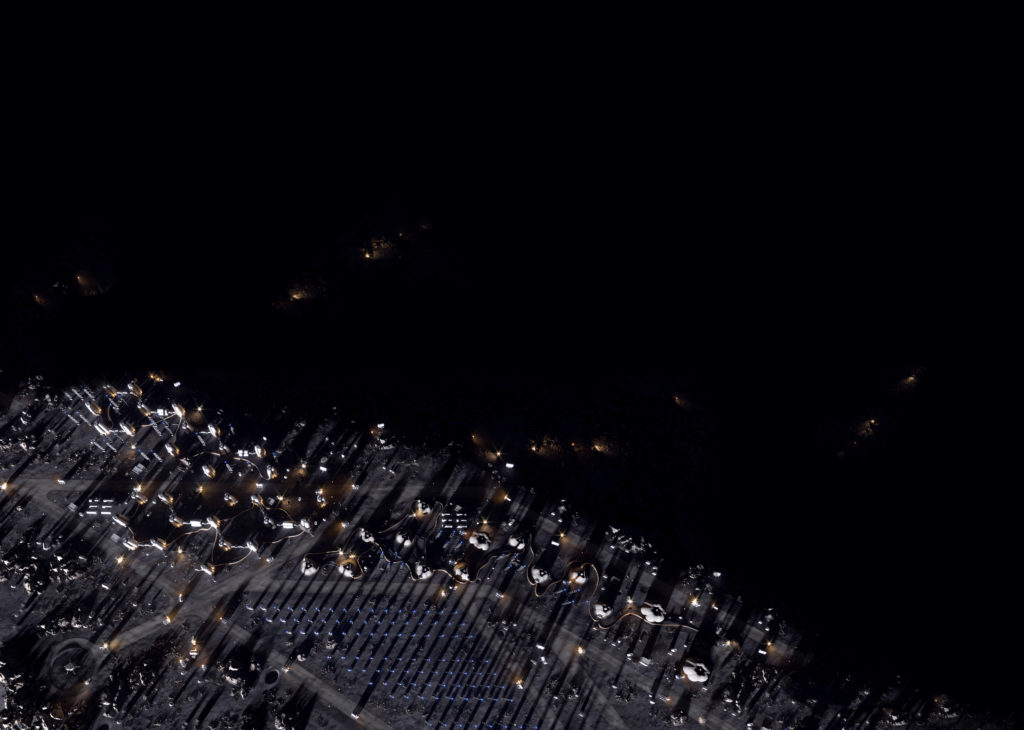
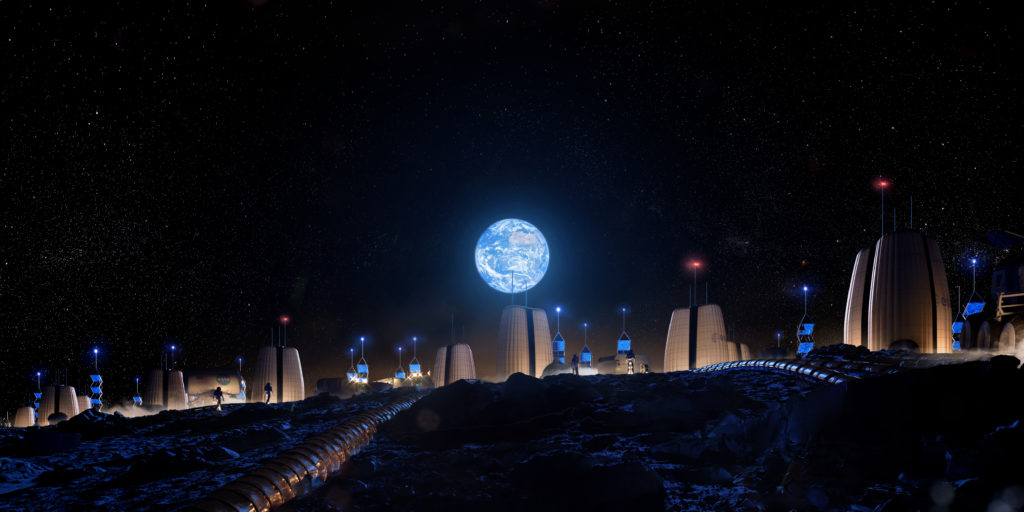
“Our job was to try and make it look realistic and believable to ESA scientists and the wider audience,” explains Vournazos. “The challenge was to find a balance between what was real and accurate and what expressed a certain vision.”
Fueled by Vournazos’ lifelong enthusiasm for deep space and space missions, the team got started by researching the scientific and visual details of the project. In addition to diving into lunar geography, they also learned about regolith (a layer or rock and dust on the Moon’s surface) and ESA’s plans to extract oxygen and metals from the moon to create a cement-like material to 3D print the settlement’s modular bases.
Slashcube also needed a working knowledge of the role of lunar physics, atmospherics, and light as all of those things affected the visualizations. Project logistics were also considered, including how the habitats and their materiality would work and the infrastructure of the whole site.
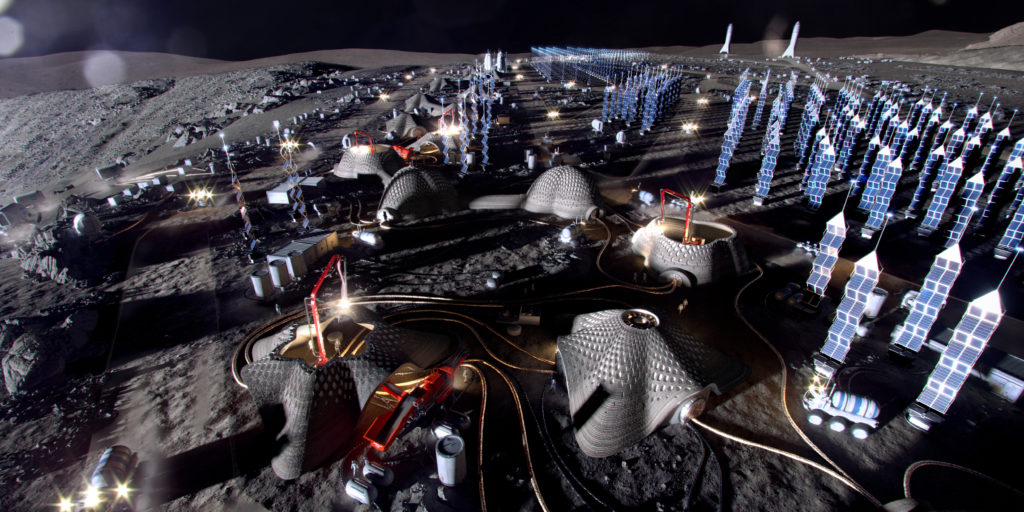
Scientific Research and Cinematic Vision
Slashcube’s visual approach was informed by what Vournazos calls a “cinematic hue.”
While the brief asked for a cinematic feel, it needed to be subtle to meet scientific requirements. For reference, the team looked to movies like “Moon” and “First Man,” which had the same vibe they were looking for, more real than sci-fi. Data from the Apollo missions along with reference books and NASA’s image library were also helpful.
Because the team’s research revealed that the lack of atmosphere means the sun would have a stronger effect on the camera lens, they recreated false blooms and glares that were actually camera defects to add drama without overkill.
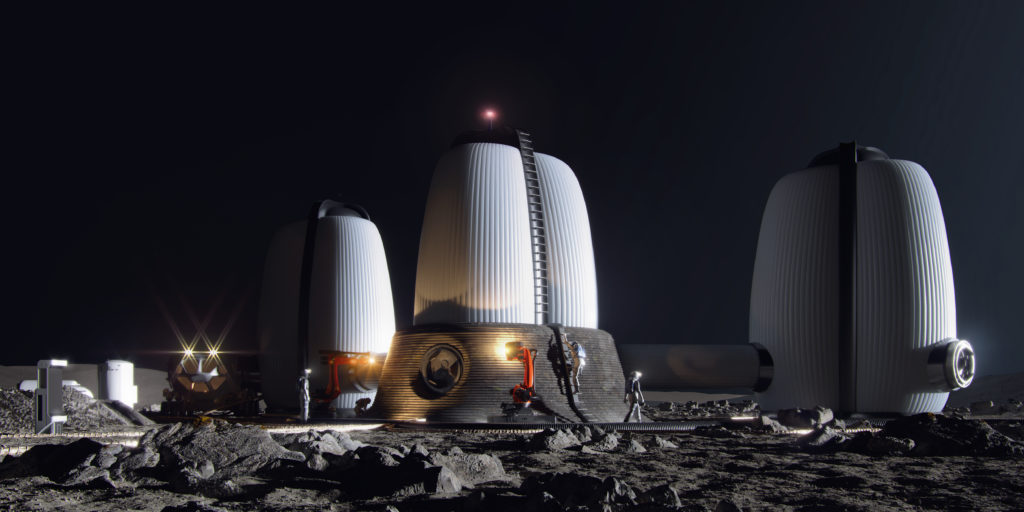
The team designed a four-layer system to model the scene; base ground layer followed by rock formations and then infrastructure. The fourth and final layer was the camera lens, which included all the defects and small details for the atmosphere. “Thankfully, we had a lot of feedback from the architects and engineers about the powdery consistency, texture, feel, and color of regolith,” Vournazos recalls. “We were able to create the ground base with the help of Cinema 4D and the great Megascans library.”
Although the Moon Village’s site was selected for its flat surface, the area features rock formations and deformation from collapses and/or objects that have hit the surface. To visualize the area correctly, including scattered debris, the team modeled or purchased many different elements. Various levels of detail were created for different distances, and objects from Megascans’ library were tweaked and retextured to match.
Depicting a scientific research community that would be built in stages over the next several decades, Slashcube’s imagery needed to convey realistic and accurate information while tapping into a near-future sensibility. Cabling systems, transport vehicles, research modules, habitats, astronaut suits, 3D printing machines, vehicles, and all types of cranes and robots needed to be part of the master plan.
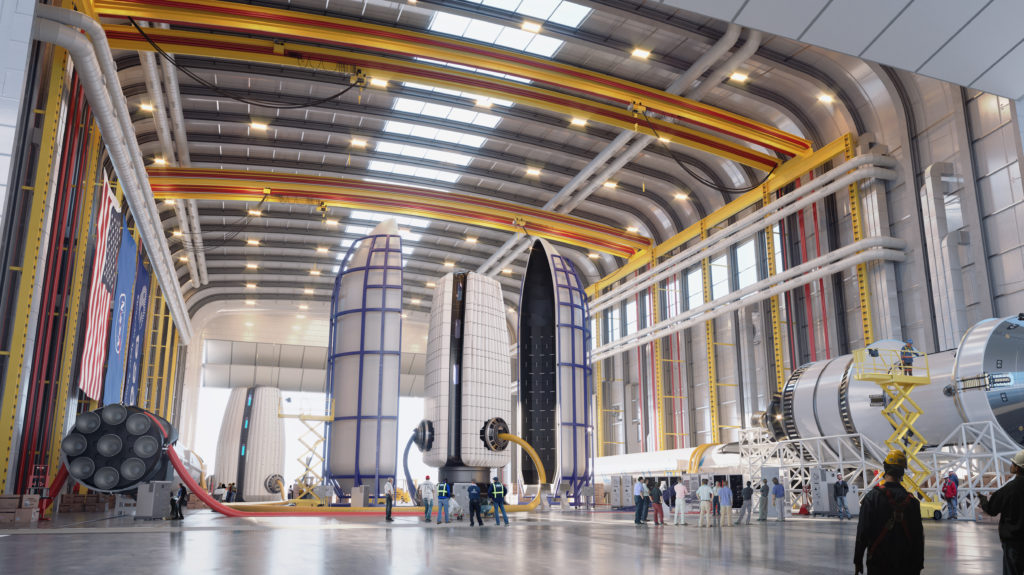
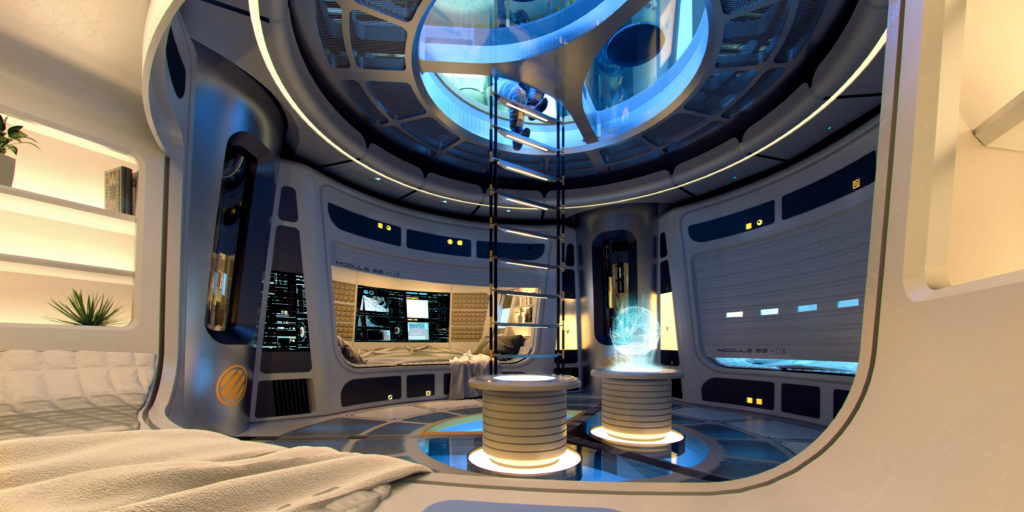
Realizing the Dream
Slashcube offered SOM a variety of presentation tools for sharing the project, including a series of stereoscopic images to give a sense of its scale. “Getting a glimpse of the sheer size of the crater in relation to the size of the site itself was essential,” Vournazos explains. “Even the feeling of a total black sky, a really dark shadow, and the reality of the Moon’s surface become more real with the use of VR shots.”
When will the Moon Village be built? Vournazos can’t say, but he imagines things will be happening on the Moon within the next decade. Plans and updates to the project have already been made since Slashcube finished the job, but the idea for the settlement remains the same. And Vournazos and his team are moving forward with projects that span the globe.
Helena Swahn is a writer in London, UK.



